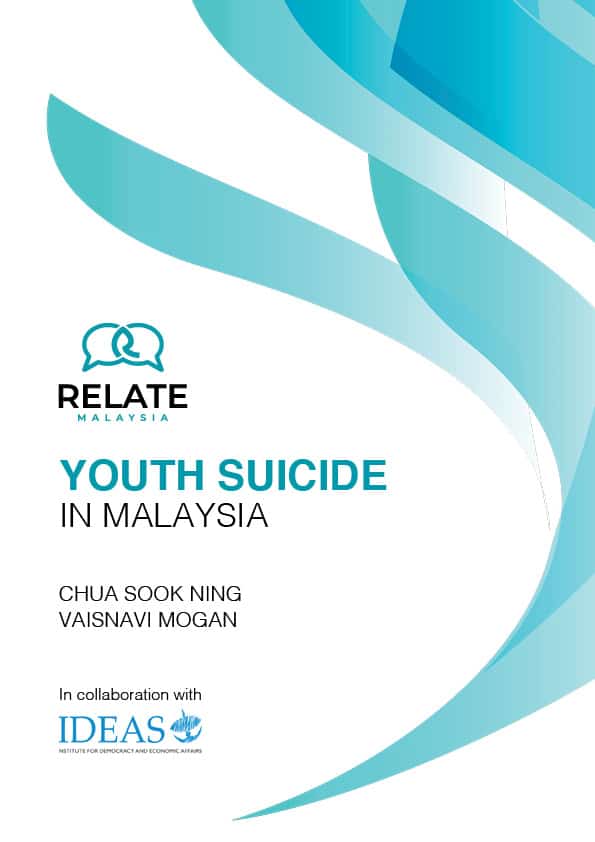This paper examines the status of youth suicides in Malaysia and provides policy recommendations for prevention.
Suicide remains a criminal act in Malaysia under Section 309 of the Penal Code, despite evidence showing that criminalization reduces help-seeking, hinders collection of accurate data, and the development and implementation of effective suicide prevention strategies.
Based on available public data, suicide is the leading cause of death among young people in Malaysia. The economic cost of these preventable deaths in Malaysia is estimated at RM 346.2 million in 2019.
Risk factors of suicide include age (youth), gender (men), psychological factors (e.g. depression, anxiety, stress, and interpersonal difficulties) and social factors (e.g. ethnicity and unemployment).
There is a lack of awareness about suicide and its risk factors in the general community in Malaysia. Unethical media reporting of suicides is an obstacle in correcting misconceptions and debunking the myths of suicide. Moreover there is a lack of evidence-based suicide campaigns. The criminalization of suicide has further hindered the development of a comprehensive suicide prevention strategy through social and public health interventions. The effectiveness of existing platforms for prevention of youth suicides remains unclear.
Some of the key recommendations proposed in this paper to address youth suicide in Malaysia are outlined below:
- The Ministry of Health should develop a comprehensive suicide prevention guideline specific to youths in collaboration with key stakeholders including Ministry of Education, Ministry of Human Resources, and Ministry of Women, Family and Community Development, as well as non-governmental organizations.
- The National Suicide Registry should be resumed and information on age, gender, ethnicity, state, and methods of suicide should be included.
- A comprehensive needs assessment on the availability and gaps in suicide prevention and treatment services should be conducted.
- Implement regulations to limit access to means of suicide, such as toxic substances.
- Assess the accessibility and effectiveness of existing mental health services available to youths, such as counselling in educational settings.
- Awareness campaigns should equip individuals with practical and useful resources. Regular evaluations of the effectiveness of programs should also be carried out.
- Guidelines for media reporting of suicides need to be developed in close collaboration with regional and national media as well as psychosocial experts (e.g. clinical psychologists, social workers) to increase “buy in” and implementation of the guidelines.

